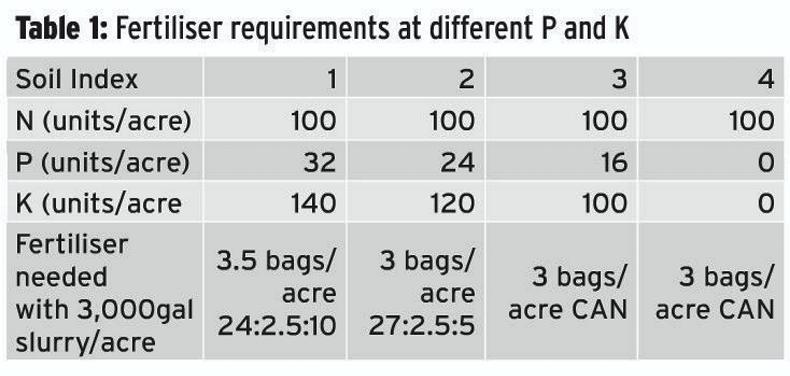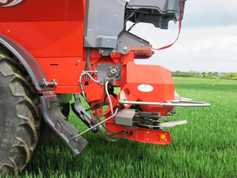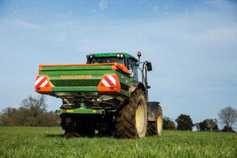With weather and ground conditions improving over the past week, silage fertiliser is being spread on many farms. Good soil pH is essential to maximise fertiliser efficiency and should be between 6.1 and 6.3.
Nitrogen is a key driver of grass growth and is essential to a good silage crop. Aim to apply 100 units/acre of nitrogen on silage fields and 120 units/acre on recently reseeded swards (0-3 years). Recently reseeded swards have a greater ability to use nitrogen and are more efficient at converting nitrogen to grass.
Silage swards will use about two units/day so leave about 50 days between application and cutting. Phosphorus (P) and Potassium (K) are essential for grass growth and it’s important that silage fields have adequate P and K to grow a good silage crop. Assess your most recent soil sample results to determine what is needed.
Cattle slurry is commonly applied to silage fields in spring and can be a very good source of P and K. In all, 3,000 gallons/acre of cattle slurry will supply sufficient P and K to grow a silage crop. Aim to spread slurry on dull damp days and also spread on very low covers, to avoid contamination of silage crops. If fields need to be rolled, do this early to avoid damaging grass. Table 1 outlines the fertiliser requirements of silage crops at different P and K indexes:

Read more
Grass+ beef: no explosion yet as thoughts turn to silage
Beef management: breeding decisions
With weather and ground conditions improving over the past week, silage fertiliser is being spread on many farms. Good soil pH is essential to maximise fertiliser efficiency and should be between 6.1 and 6.3.
Nitrogen is a key driver of grass growth and is essential to a good silage crop. Aim to apply 100 units/acre of nitrogen on silage fields and 120 units/acre on recently reseeded swards (0-3 years). Recently reseeded swards have a greater ability to use nitrogen and are more efficient at converting nitrogen to grass.
Silage swards will use about two units/day so leave about 50 days between application and cutting. Phosphorus (P) and Potassium (K) are essential for grass growth and it’s important that silage fields have adequate P and K to grow a good silage crop. Assess your most recent soil sample results to determine what is needed.
Cattle slurry is commonly applied to silage fields in spring and can be a very good source of P and K. In all, 3,000 gallons/acre of cattle slurry will supply sufficient P and K to grow a silage crop. Aim to spread slurry on dull damp days and also spread on very low covers, to avoid contamination of silage crops. If fields need to be rolled, do this early to avoid damaging grass. Table 1 outlines the fertiliser requirements of silage crops at different P and K indexes:

Read more
Grass+ beef: no explosion yet as thoughts turn to silage
Beef management: breeding decisions







 This is a subscriber-only article
This is a subscriber-only article










SHARING OPTIONS: